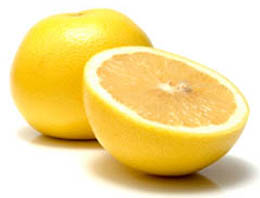Hybrids vs. GMOs
- By Chris Mittelstaedt
- Reading Time: 3 mins.

Dear FruitFriends,
In the following article, Heidi Lewis writes about genetically modified organisms (GMOs), and more specifically what they are (and are not) relative to food. The FruitGuys has always held the policy that we will never include GMOs in our fruit or vegetable mixes. We support the drive to label GMOs, as we believe strongly that consumer protection and transparency in any realm is a good and important thing. You can learn more about that movement at labelgmos.org. The definition of genetically modified food is an important one to understand, and we’ve included it at the end of the article for your reference. Please let us know if you have any questions or comments.
Enjoy and be Fruitful!
Chris Mittelstaedt, Founder & CEO, The FruitGuys
Want farm-fresh fruit?
We've got you covered.
Hybrids vs. GMOs
By Heidi Lewis
To understand the difference between genetically modified food and naturally hybridized food, we need to understand the hybrid process. Natural hybridization is nothing more than a cross between two related species or cultivars. Hybrids have happened naturally throughout history via cross-pollination, but gardeners, farmers, and horticulturists have created the bulk of modern hybrids (such as the many stone fruit combos), often over the course of many years.
Sometimes, the result of a plant pairing (both in the wild or controlled) turns out to be superior to the parent plants. This is known as “hybrid vigor.” Some of the hundreds of vigorous results we benefit from are slicer tomatoes, tangelos, peppermint, seedless watermelon, grapefruit, and even wheat—in other words, hundreds of natural hybrid foods we eat every day. Included in this group of plants that have, over many years, made or been bred for adaptation, including roses, irises, and other cut flowers. On the animal side, a great example of hybrid vigor is the mule: intelligent, patient, sure-footed—a better work partner than either its horse or donkey parents.

To hybridize plants, you need to be a keen observer and have deep knowledge of the plants you want to improve. Gregor Mendel, the father of modern genetics, spent his monastic life observing pea plants. Luther Burbank, the genius behind much of the produce we eat today, said, “The secret of improved plant breeding, apart from scientific knowledge, is love.”
Genetically engineered or GMO foods are not hybridized foods or hybrid foods. They can contain genetic material from one organism (say a fish) that would never naturally be found in another organism (say a tomato). GMO experiments have actually included combining fish and tomatoes, and bacteria with corn—not improvements we would want to eat.
Want farm-fresh fruit?
We've got you covered.
Following is the definition of genetically engineered food per the proposed California Right to Know Genetically Engineered Food Act:
(c) Genetically engineered.
(1) “Genetically engineered” means any food that is produced from an organism or organisms in which the genetic material has been changed through the application of:
(i) In vitro nucleic acid techniques, including recombinant deoxyribonucleic acid (DNA) techniques and the direct injection of nucleic acid into cells or organelles, or
(ii) Fusion of cells (including protoplast fusion) or hybridization techniques that overcome natural physiological, reproductive, or recombination barriers, where the donor cells/protoplasts do not fall within the same taxonomic family, in a way that does not occur by natural multiplication or natural recombination.
(2) For purposes of this subsection (c):
(i) “Organism” means any biological entity capable of replication, reproduction or transferring genetic material.
(ii) “In vitro nucleic acid techniques” include but are not limited to recombinant DNA or RNA techniques that use vector systems and techniques involving the direct introduction into the organisms of hereditary materials prepared outside the organisms such as microinjection, macro-injection, chemoporation, electroporation, microencapsulation, and liposome fusion.


